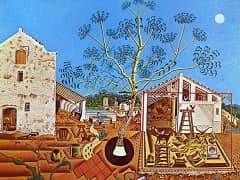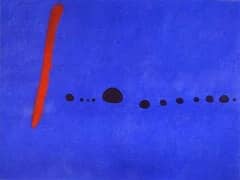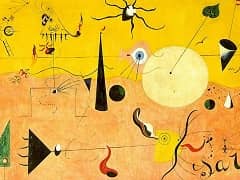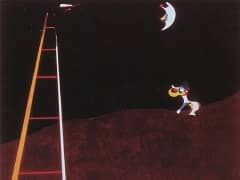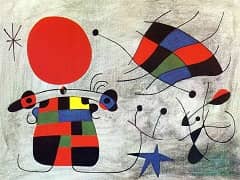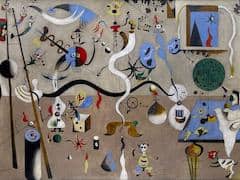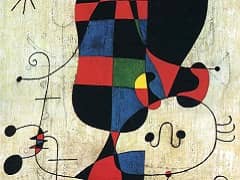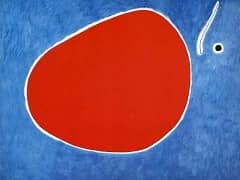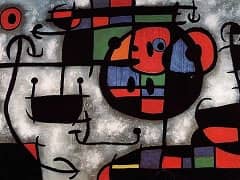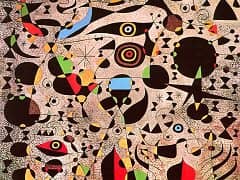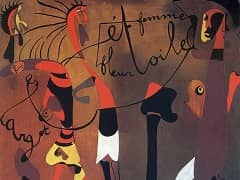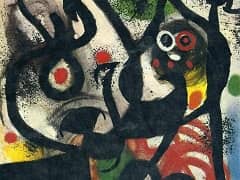Dutch Interior II, 1928 by Joan Miro
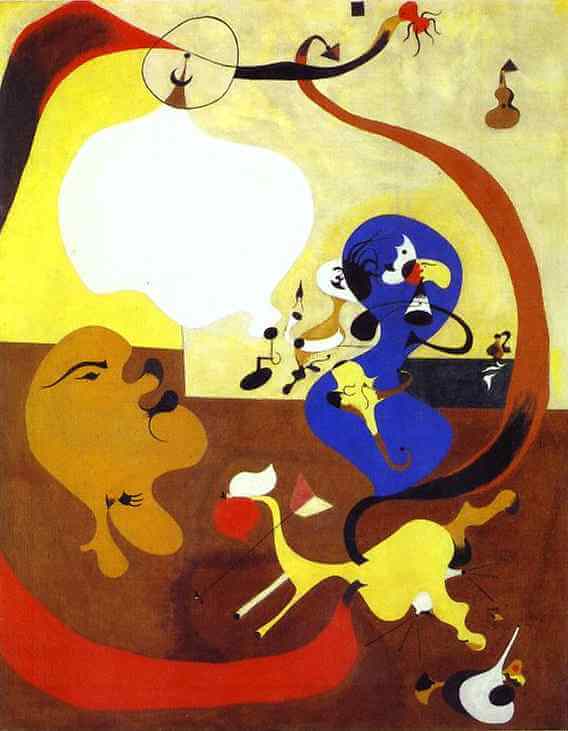
In 1928 Joan Miro returned to Paris from a trip to the Netherlands with several postcard reproductions of works by seventeenth-century Dutch artists. At least two of these have been identified as sources for the Dutch Interior paintings in the Museum of Modern Art, New York and Guggenheim Museum. The Guggenheim work Dutch Interior II is a transformation of Jan Steen's The Dancing Lesson (Collection Rijksmuseum, Amsterdam) and conveys the synthesis of carefully observed, precisely executed detail and imaginative generalization of form that proceeded from Miro's encounter with the Dutch Baroque. In this combination of objective minutiae and abstract vision, Dutch Interior II reverts conceptually to works of the early 1920s, such as The Tilled Field, 1923 - 24.
The gradual translation of veristic detail into eccentric, evocative form can be followed through preliminary sketches of specific motifs to a meticulously complete preparatory drawing. A conspicuous modification of the Dutch original is Miro's enlargement of and focus on human and animal figures and his concomitant suppression or deemphasis of inanimate objects. Thus a window at the upper center of the Steen has been greatly reduced in size, as though it had been sent hurtling through a vast space. The real subject of the Steen is not the cat, but the sound, movement, and hilarity the dancing lesson provokes. Miro seizes on this anomaly in his version: although the cat serves as the hub of his centrifugal composition, he emphasizes the cacophony and animation of the lesson through the swirling motion of myriad details and the dancing rhythm of points and counterpoints.

